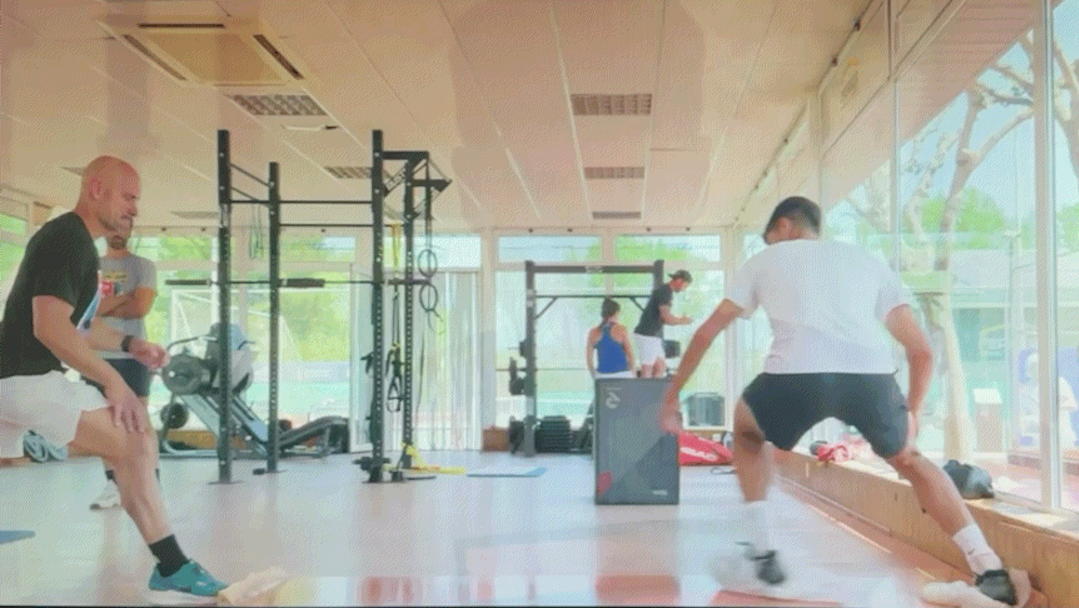This Tuesday’s training topic is a very deep cut in a couple of ways. At exactly the 10 minute mark into S1E2 in the new Netflix docuseries “Break Point” there is a brief glimpse of a player performing what I believe to be a Sumo Squat Stretch. He is assisted by a training partner providing counterbalance using a strap.
I was unable to positively identify the player because his face isn’t visible during the scant two seconds that he appeared on the screen. His training partner is wearing Joma brand shoes and socks. That supports my belief that the player is also wearing socks from that brand. From that data point alone, this is possibly one of the Spaniards. However, no player sponsored by Joma competed wearing white shorts and a red shirt at the Australian Open in 2022 where this clip was taken.

I also suspect that the player might have plantar fasciitis issues. The fact that he isn’t wearing shoes may be an indication that he was in the midst of a series of foot, ankle, and calf stretching exercises. Additionally, the Sumo Squat stretch is great for rehabilitation and prevention of plantar fasciitis.
This was the first time I had seen the variation of this stretch using a strap for counterbalance. Maintaining balance when performing it correctly can be a challenge for people with the muscular imbalances that prompted the performance of the exercise in the first place.
The typical advice when that is the case is to use a chair for balance. I personally hold onto an exercise bench in my home gym to keep from toppling backward. On the court, the net post can be used for stability. I have to admit that having a partner provide the counterbalance with a strap looks way cooler than holding onto something. It almost looks like resisted exercise, but I don’t think that is what was happening.
The exercise itself is pretty simple. The feet are positioned slightly wider than the shoulders with the toes pointing outward at about 45 degrees. From there, slowly lower into the squatting position, dropping down as low as possible. Pressing the elbows outward on the inside of the knees can increase the intensity of the stretch. I only do this stretch 1-2 times a day holding for about 30 seconds each time.
This stretch is good for the systemic ankle and hip tightness that can cause or aggravate plantar fasciitis. It is also a great stretch for the groin and inner thigh muscles which are highly involved in tennis stroke production. It’s also a great strengthening position for the glutes and quads.
The Sumo Squat stretch is a great exercise to include in your training routine. It takes less than a minute to perform which is a relatively small investment to make toward injury prevention and rehabilitation.
Editorial note: I would be happy if any internet sleuths can run down who the player is who is shown performing this exercise. Additionally, I am interested in any insight into the purpose and utility of the strap with this exercise.



